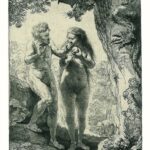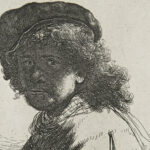A prolific painter, draftsman, and etcher, Rembrandt van Rijn was a major artist of the Dutch Golden Age. His zealous preoccupation with direct observation—he’s said to have sketched endlessly, taking note of pedestrians, beggars, women, and children—informed his compelling, deeply human portraiture: His canvases convey emotional depth through a keen attention to subjects’ gestures, expressions, and features, and through dramatic interplays of light and shadow. Such tonal contrast, known as chiaroscuro, features prominently in Rembrandt’s most famous works, including The Night Watch (1642), a monumental painting of militia guards. Today, the artist is represented in the world’s most prestigious collections, including the Metropolitan Museum of Art, the Louvre, the Rijksmuseum, and the National Gallery in London. Of the roughly 300 paintings attributed to the artist, only about 35 are thought to remain in private hands. At auction, Rembrandt’s paintings have sold for tens of millions, and his etchings have sold for up to seven figures.



